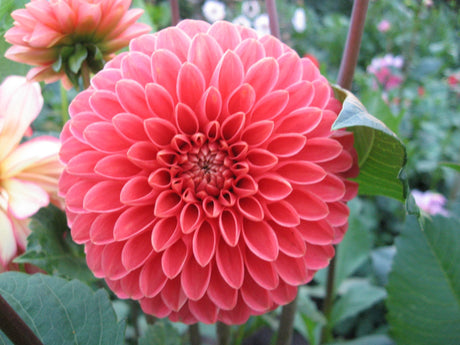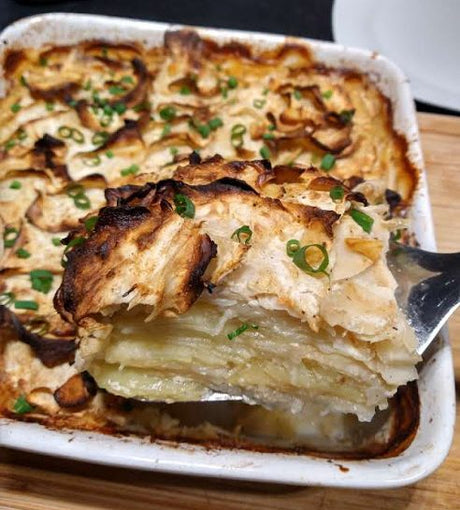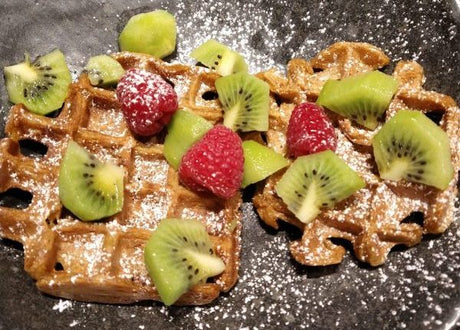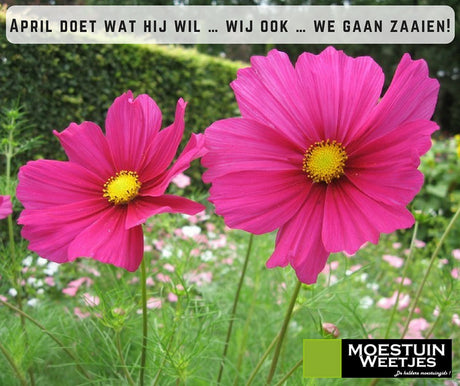Table of Contents:
First and foremost: What is kombucha?
Making kombucha (or kombucha)—you've probably seen it among the soft drinks in supermarkets, health food stores, or on the menus in restaurants and bars. It's often available in cans in supermarkets, but making your own is a fun and affordable alternative. This somewhat unusual drink has been gaining popularity in recent years. But did you know you can easily make kombucha yourself? Making kombucha always starts with obtaining sweet tea. In this article, I'll share everything I know about kombucha and explain how to make this healthy drink yourself, from start to finish. No expensive equipment or ingredients required.
Some general things about making kombucha
The origin of kombucha
To be honest, I'd never heard of kombucha until a few years ago. Yet, kombucha has been around for almost 2,000 years. It was first brewed in China and then spread to Japan and Russia. In the early 20th century, kombucha also became popular in Europe. According to Traditional Chinese Medicine, kombucha tea was called the "Tea of Immortality" and "the elixir of life." The health benefits of kombucha haven't been fully scientifically proven, but it does have a lot of fans who, like us, feel very good about it.

What does kombucha taste like?
Kombucha is a fermented tea made from tea (how could you guess), sugar , and a SCOBY . To make kombucha, you must use real tea from the Camellia sinensis plant, such as pure tea, black tea, or green tea. You can use various types of tea for kombucha, but only real tea should be used. Fresh tea is preferred for best results.
The bacteria and acids that form during the fermentation process create a gelatinous film on top of the drink. This film is called a SCOBY (= symbiotic colony of bacteria and yeast). I'll explain the SCOBY in more detail later in this article.
My 5 top reasons to make your own kombucha

Why brew kombucha? There are plenty of tea-based drinks in the supermarket. And if you really want to drink kombucha, can't you just buy it ready-made?
Making your own kombucha also allows you to experiment with different flavors, so you'll always find a variant that suits you.
Below, I'll share my 5 reasons why I make my own kombucha. You can create new kombucha again and again, completely tailored to your own preferences. I hope I can convince you.
Reason 1: Health Benefits of Kombucha
Because the tea is fermented, kombucha is rich in probiotics and antioxidants . It's said to improve your gut flora and digestive health, and strengthen your immune system. I say "supposed" because I couldn't find any hard scientific evidence. But let's face it, everyone could use a stronger immune system in this season full of colds and viruses.
Reason 2: Control over ingredients and taste
Homemade kombucha allows you to choose exactly which ingredients you use, such as the type of tea, sugar, and flavorings. For example, you can choose organic cane sugar as a healthier option. This is ideal if you have specific preferences or want to avoid certain ingredients, such as artificial sweeteners or preservatives. Making it yourself also allows you to avoid refined sugar, which often contains fewer minerals and can affect the fermentation process and the flavor.
Reason 3: Sustainability and less waste
Making your own kombucha can reduce packaging waste. Many commercial kombucha bottles are discarded after use, but if you brew your own, you can reuse your own glass bottles.
Reason 4: Healthier and cheaper than in the store
The basic supplies for making kombucha are simple and relatively inexpensive. A single batch easily makes 1.5 to 2 liters of kombucha. Tea, sugar, and a SCOBY are the main ingredients, and these can often be purchased in bulk, lowering the cost per batch. A SCOBY can also be reused for multiple batches, and with each new batch, you often receive a baby SCOBY as a gift from Mother Nature.
Reason 5: A fun and educational process
The process of making kombucha is a fun and educational experience. It gives you insight into fermentation and offers the wonderful sense of satisfaction when you create and enjoy your own beverage. And let that be the motto at Plukkers.

What do you need to make kombucha?
Essential ingredients
- black or green tea
- cane sugar (preferably organic cane sugar)
- dextrose
- natural honey
- water
- starter liquid (which you brewed yourself during the first fermentation of a previous batch, or bought ready-made )
- a SCOBY
A word of explanation about the SCOBY - or the mother of your kombucha

A SCOBY (Symbiotic Culture of Bacteria and Yeast) is a living culture of bacteria and yeasts essential for kombucha's fermentation process. It's a thick, gelatinous substance that forms on top of the kombucha during fermentation. The SCOBY contains both bacteria and yeasts that work together to convert the sugar in the tea into alcohol, acid, and other compounds, creating kombucha's signature flavor.
The SCOBY is also called the kombucha fungus. This kombucha fungus is important for the fermentation process because you can store it and reuse it to make new kombucha again and again. It's important to store the kombucha fungus in a suitable location to ensure the fermentation process continues smoothly.
It's somewhat similar to how sourdough bakers have a "mother" dough or sourdough starter. This starter is a unique collection of yeasts that needs to be fed with flour and water and is used to make more sourdough breads. Making kombucha is exactly the same story, but instead of using flour and water, you feed your SCOBY with tea and sugar. And instead of sourdough, a SCOBY doesn't produce bread, but it does produce delicious kombucha.
SCOBYs are typically cream to light brown in color and usually brown over time. Healthy SCOBYs come in a variety of shapes, sizes, and colors, depending on the brewer, their environment, and the ingredients used.
Thanks to the SCOBY, the original sweetened tea is transformed into a deliciously healthy drink. The SCOBY consumes all the sugar and converts it into acids, vitamins, and carbon dioxide. This transforms your heavily sweetened tea into a naturally sparkling and healthy soft drink.
Fun fact: With each new batch of kombucha, a new "baby" SCOBY grows over the top of your liquid. It then takes the shape of the vessel or jar you're brewing in. It's often attached to the original "mother" SCOBY and appears as a layer on top. But even if the baby SCOBY isn't attached to the mother SCOBY, that's perfectly fine. You can separate them to create multiple SCOBYs and use them to brew gallons of kombucha or to share with others.
What equipment do you need to make kombucha?
- a scale (and possibly a precision scale to weigh your tea)
- a glass jar that is heat resistant
- a thermometer
- a rubber band or a string
- a cheesecloth
- a fine sieve
- a glass pen or label
Tip : With this kit, you'll have everything you need to get started and brew kombucha for life. You'll also receive the free "Kombucha Brewing" video course from Moestuin Advies (valued at €19). Perfect if you prefer watching videos to reading blogs.
After purchasing the Kombucha starter set, you'll automatically receive an email with instructions for viewing the Kombucha courses. Be sure to check your spam folder if you don't find it right away.

How to make Kombucha in 5 easy steps: step-by-step plan
Step 1: Grow your own SCOBY
You can score a SCOBY from a kombucha friend, buy a ready-made SCOBY (for example, on Marktplaats or Tweedehands), but for hygienic reasons (and just for fun), you can easily grow your own. With your first kombucha, you lay a healthy foundation for all subsequent batches, because it builds the right culture. Once you have a SCOBY, you can keep making kombucha forever and ever.
Growing a SCOBY takes about two to four weeks. The time may be shorter if your kitchen is warm and longer if it's cooler. Generally, try to keep your kombucha at an average room temperature of around 70°F (21°C), and your SCOBY will develop in just over two weeks. During this process, the kombucha ferments under the influence of the right temperature and time, with bacteria and yeast working together to develop the beverage.
What are the ingredients to make a SCOBY?
Let me list the ingredients for you:
- 7 to 10 grams of loose black or green tea , or a mixture of these (or 1 heaped tablespoon)
- 100 grams of cane sugar
- 55 grams of dextrose
- 65 grams of natural honey
- +/- 1.8 liters of water
- 200 ml starter fluid
How to grow your own SCOBY:
- Bring half a liter of water to a boil. Add the loose leaf tea. Turn off the heat and let the tea steep for 1 hour.
- Pour the tea through a sieve.
- Add half a liter of cold water, cane sugar, and dextrose to the still-warm tea. The residual heat will help the sugar dissolve. Stir well until you see that all the sugar granules have dissolved.
- Use the thermometer to measure the temperature of your tea; knowing is key! If your tea isn't warmer than 35°C, you can add the honey. If your tea is warmer than 35°C, be patient, otherwise the beneficial components of the honey will be destroyed. Now stir again until the honey is dissolved.
- Now you have made your sweet tea.
- Pour the sweet tea into the jar you'll be fermenting in. Attach a thermometer strip to the jar so you can keep a close eye on the temperature.
- Top up with (cold) water until you have 1.8l of sweet tea.
- Now let your sweet tea cool until it reaches a maximum of 28°C. Once your tea is cool enough, you can add the starter liquid. It's crucial to wait until your tea has cooled sufficiently; otherwise, all the beneficial components in the starter tea will be destroyed, preventing the formation of a SCOBY.
- Seal your jar with a clean cloth (like cheesecloth) and a rubber band or string. Place your jar in a warm spot (20-24°C is ideal) where the liquid won't vibrate. As mentioned before, it's important to keep the jar you're brewing in still so the bacteria and yeast can grow together and form a SCOBY. Also, don't place the jar in direct sunlight, as this will kill the bacteria. That would be a shame, because you want them!
- And now for the hardest part… Waiting! It takes about two to a maximum of four weeks for your SCOBY to form. During this time, don't remove the cloth from your jar to minimize the risk of harmful bacteria (read: mold). When your SCOBY is about 1.5 cm thick, you can move on to the next step: the first fermentation. You can check if your kombucha has fermented properly by measuring the pH. A pH of 4.6 or lower means your kombucha is good and safe to drink.
- Store the SCOBY in its original tea until you're ready to brew your first batch. The SCOBY could potentially live and grow for years if treated with care. However, the tea you've used to make the SCOBY is very vinegary. Don't use this tea as a starter for your first fermentation.
- Once your SCOBY is formed, you can brew your first real kombucha.
Step 2: Make the sweet tea
Ingredients
- 7 to 10 grams of loose black or green tea, or a mixture of these (or 1 heaped tablespoon)
- 100 grams of cane sugar
- 55 grams of dextrose
- 65 grams of natural honey
- +/- 1.8 liters of water
Method
- Bring half a liter of water to a boil. Add the loose leaf tea . Turn off the heat and let the tea steep for 1 hour.
- Pour the tea through a sieve .
- Add half a liter of cold water , cane sugar, and dextrose to the still-warm tea. The residual heat will help the sugar dissolve. Stir well until you see that all the sugar granules have dissolved.
- Use a thermometer to measure the temperature of your tea; knowing is key! If your tea isn't warmer than 35°C, add the honey. If your tea is warmer than 35°C, be patient, otherwise the beneficial components of the honey will be destroyed. Stir again until the honey is dissolved.
- Now you have made your sweet tea.
- Pour the sweet tea into the jar you'll be fermenting in. Attach a thermometer strip to the jar so you can monitor the temperature.
- Top up with (cold) water until you have 1.8l of sweet tea.
- Let your sweet tea cool until it reaches a maximum of 28°C.
The kombucha fermentation process usually takes between 7 and 21 days in a warm, dark place, depending on the temperature and your personal taste preference.
Step 3: Add your scoby: the fermentation process begins
- When your tea is cool enough, add 200 ml of starter liquid . It's crucial to wait until your tea has cooled sufficiently, otherwise all the beneficial ingredients in the starter will be destroyed.
- Now add your SCOBY .
- Seal your jar with a cheesecloth and a rubber band . Don't cover it with an airtight lid, as it needs air. But make sure the rubber band secures the cloth to keep dust and fruit flies out. Place your jar in a warm place ( 20-24°C is ideal) where the liquid won't vibrate. Don't lift the cloth; it's best to disturb your kombucha as little as possible.
- Your SCOBY might sink to the bottom or float, both are fine. During the fermentation process, you'll see the SCOBY float to the top on its own. After two days, you'll see white dots forming around your SCOBY. This is usually when people get nervous and think it's mold. In most cases, it's actually just a new SCOBY starting to form. If you handle things cleanly, there's little chance of your kombucha molding. Wait a few days; there's a greater chance of a new SCOBY forming.
- Note the date you started fermenting on a sticker, or on the jar itself with a glass marker. The cooled sweet tea can be poured into a clean 2-liter glass jar for fermentation.

Step 4: the first taste tests
After 7 days, the SCOBY has done its work and the sugars have turned into acids. You can start tasting your brew after about 5 or 6 days . Once you get the hang of it, you'll get a feel for how long it takes for your brew to reach a state you like. Taste with a straw, a wine thief (test pipette), or scoop some kombucha out of your jar with a wooden spoon. From day 5, or once your SCOBY is fully formed, you shouldn't worry about it moving around. If you prefer your kombucha less sweet, let it ferment so the bacteria and yeast can continue to consume the sugars. If you prefer a sweeter flavor, stop the fermentation process a bit earlier to leave more sugar. Keep tasting daily until it tastes good to you ; 7-9 days of fermentation is a good guideline.
During the first fermentation, a new SCOBY is formed. Does your kombucha taste the way you like it? Then you can move on to the second fermentation. The second fermentation isn't mandatory, but it ensures your kombucha becomes nice and fizzy. In this phase, we'll add flavor. Remove your SCOBYs from your kombucha and store them in some kombucha at room temperature. Always make sure your SCOBYs don't dry out. This batch of kombucha, along with your SCOBY, will serve as your homemade starter liquid for brewing another batch later. Refrigerate the remaining kombucha until you're ready to move on to the second fermentation.
Summary: If you're happy with the taste, store your SCOBY and some kombucha at room temperature (to use later to brew a new batch). Store any remaining kombucha in the refrigerator until you're ready to start the second fermentation.
Step 5: Second fermentation for flavor and sparkle
The importance of the second fermentation

During the second fermentation, your kombucha tea is flavored (usually with fruit), bottled in sealable bottles, and left to ferment for about 2-4 days at room temperature to create carbonation. By storing the kombucha in sealable bottles, you stop the fermentation at the desired point and maintain optimal flavor. The second fermentation takes place in a sealed container, which traps the carbonation in the fermented tea as it continues to ferment.
So use a container that can withstand pressure. Bottles with a swing top are ideal!
How to add flavor to kombucha?
At this stage, you can let your imagination run wild. Add fruit juice, fresh fruit, herbs, and more. Anything is possible! There's no set recipe for flavorings; you'll have to rely on trial and error based on your personal preferences.
This is what you need:
- your kombucha from the first fermentation
- fresh fruit / fruit juice / dried fruit / herbs
- bottle with clip closure
- funnel
- sieve
Method for the second fermentation
- Remove the SOCBY from your fermented kombucha.
- Fill your bottle and add your flavoring of choice.
- Let your bottles ferment for another 2 to 4 days at room temperature . Tip: Sometimes a lot of carbon dioxide is created, which can cause your bottle to overflow or, worse, explode. Store your bottles in a safe place. To prevent excessive pressure buildup, you can carefully open your bottle every day (this is also called burping ). Similar to opening a bottle of champagne.
- After the second fermentation, place your bottles in the refrigerator to stop the fermentation. Kombucha is best stored in the refrigerator to preserve its fizz and flavor.
- Below you'll find several ways to flavor your kombucha and some notes on how each type affects the final product.
In short:
Grow your own SCOBY (1 to 4 weeks) - to create the "mother".
Start the first fermentation (6 to 10 days) – to make the actual kombucha.
Secondary fermentation (3 to 10 days) - to flavour and carbonate the kombucha (=the process of carbon dioxide 'spark' formation during fermentation).
Options for flavoring your kombucha:
Want to add fresh fruit? Cut the fruit small enough to fit in your bottle, and you can easily remove the fruit pieces after drinking your kombucha.
A general guideline is to add 5 to 10% fruit to your kombucha. So, in a 1-liter bottle, pour 900 ml of kombucha and add about 45 to 50 grams of fruit.
Fresh fruit puree or juice
Ideal if you want a kombucha with lots of fizz and bursting with flavor. A key requirement for yeasts to access their food source (aka sugar) is breaking down the fruit molecules to make the sugar as easy as possible for them to digest. If you use fresh fruit in a juicer or blender to puree it, you break down those fruit molecules and make it easier for the yeast to feed on the sugar once you bottle it. The freshness and pulp often cause a baby SCOBY to form in the bottle, which is perfectly harmless.
Fresh/frozen fruit pieces
Many homebrewers add a few fresh or frozen pieces of fruit to their kombucha. This is a great option if you want a more subtle fruit flavor in your kombucha and want to let the tea's own flavor shine. While this is certainly fine, your kombucha may not be as carbonated as you desire. If the yeast can't access the sugar, they can't consume it and convert it into carbon dioxide. So, if you like using fresh fruit pieces (or don't like fresh fruit puree) but find you're not getting the fizz you want, try adding a teaspoon of sugar to your bottle along with the fruit before sealing. Sometimes the yeast just needs a little more "food" to fizz.
Fresh or dried herbs
Herbs are a great addition to kombucha. As gardeners, we prefer fresh herbs from the garden whenever possible, or high-quality dried herbs (make sure they're still fragrant!) that haven't been gathering dust in your pantry for half a decade. Old dried herbs can give your kombucha a musty smell, so fresh is best. Use them sparingly, too, as the flavor of herbs can intensify over time as they steep in the liquid.
Dried fruit
This is a great option if you don't have fresh fruit on hand. Some potential drawbacks: You might encounter the same problems as using fresh fruit, but even more so. Kombucha may have difficulty extracting sugar from the dried fruit. And depending on the chemicals/ingredients used to preserve the fruit, it could result in an off-flavor in your final product.











1 comment
Kan het dat bij de 2e fermentatie van komboucha er ook een scoby ontstaat? Heb vaak een slijmerige massa in de fles zitten en draadjes.. Als ik het drink alsof ik een klodder snot binnen krijg
Is dit normaal?